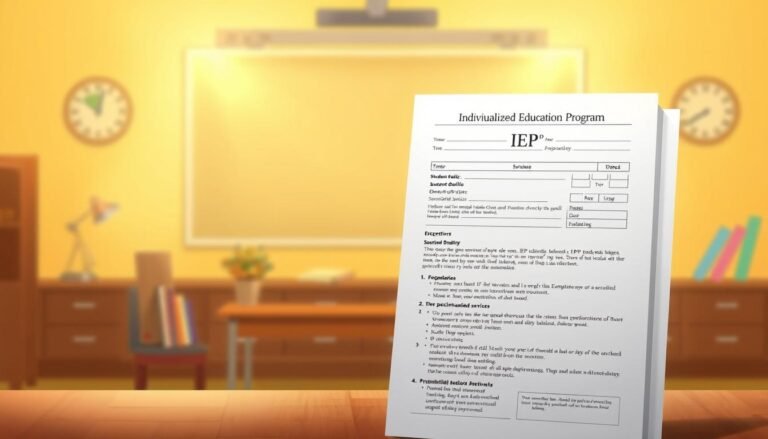
Dyslexia vs. Dysgraphia: Recognizing the Unique Challenges of Each Condition
Introduction
Navigating the educational landscape can be a daunting challenge for every child, but for those with specific learning disabilities, the journey can feel even more arduous. Two of the most discussed conditions in this realm are dyslexia and dysgraphia, both of which present unique challenges that educators, parents, and affected individuals need to understand deeply. As we delve into the topic of Dyslexia vs. Dysgraphia: Recognizing the Unique Challenges of Each Condition, we aim to provide clarity on how these conditions differ, and how they impact the learning experiences of individuals. Through insightful analysis and real-world case studies, this article will highlight essential strategies for support and intervention, aiming at fostering a more inclusive educational environment.
Understanding Dyslexia and Dysgraphia
What is Dyslexia?
Dyslexia is a neurological condition that primarily affects reading capabilities. Individuals with dyslexia often struggle with phonemic awareness, making it difficult to decode words accurately and fluently. While dyslexia is frequently characterized by difficulty in recognizing written words, it also influences spelling and writing skills. While individuals with dyslexia may have average or above-average intelligence, their reading ability can significantly hinder their academic performance and self-esteem.
Key Points about Dyslexia:
- Difficulty with word recognition
- Challenges with spelling
- Struggles with reading fluency
- Often affects vocabulary and comprehension
What is Dysgraphia?
On the other hand, dysgraphia impacts the physical act of writing. Individuals with dysgraphia may struggle to form letters, control their handwriting, and organize their thoughts on paper. Unlike dyslexia, where the primary issues arise in reading, dysgraphia manifests as difficulties in written expression. This condition can result in messy and hard-to-read handwriting, problems with spelling, and challenges in organizing sentences coherently.
Key Points about Dysgraphia:
- Fine motor skill challenges
- Inconsistent handwriting
- Difficulty organizing written thoughts
- Problems with spelling and grammar
Dyslexia vs. Dysgraphia: Key Differences
To better appreciate the Dyslexia vs. Dysgraphia: Recognizing the Unique Challenges of Each Condition, let’s look at a comparative table highlighting their differences:
| Feature | Dyslexia | Dysgraphia |
|---|---|---|
| Primary Difficulty | Reading and decoding | Handwriting and written expression |
| Type of Error | Word recognition issues | Poorly formed letters and spelling |
| Impact on Learning | Affects reading fluency and comprehension | Affects writing speed and clarity |
| Co-occurrence | Often co-occurs with ADHD | Can co-occur with dyslexia |
| Cognitive Function | Intelligence often intact | Intelligence often intact |
Case Study: Maria’s Journey with Dyslexia
Maria is an 8-year-old girl diagnosed with dyslexia. Despite her intelligence and eagerness to learn, she struggles in reading tasks. Reading aloud can be a laborious effort for her, causing frustration in classroom settings. Interventions like special reading programs and one-on-one tutoring have aided her in acquiring coping strategies, enabling her to improve her reading comprehension over time. Maria’s case exemplifies the unique set of challenges dyslexia presents while showcasing the importance of targeted interventions.
How Each Condition Manifests
The Challenges of Dyslexia
Understanding the challenges associated with dyslexia is crucial. Children with dyslexia may struggle with:
- Decoding Words: Difficulty breaking down words into manageable phonemes leads to issues with reading fluency.
- Spelling Errors: They often make spelling mistakes that seem random, as phonetic rules may not be applied consistently.
- Reading Comprehension: Due to challenges in decoding, understanding the context often becomes difficult, which can lead to poor performance in reading assignments.
The Challenges of Dysgraphia
Similarly, dysgraphia presents its unique hurdles:
- Handwriting Difficulty: Children with dysgraphia may write slowly and have difficulty with letter formation, often resulting in illegible handwriting.
- Organization of thoughts: These students may struggle to translate their thoughts into written form, often leading to incomplete or incoherent assignments.
- Spelling Consistency: Owing to motor control issues, spelling may be inconsistent and non-phonetic.
Case Study: Jake’s Battle with Dysgraphia
Jake, a 10-year-old boy with dysgraphia, finds it challenging to complete written assignments on time due to his slow writing speed. His physical discomfort while writing manifests in frequent erasing and rewriting, leading to frustration and fatigue. Educational strategies that focus on using technology, such as dictation software and graphic organizers, have significantly improved Jake’s ability to express his ideas on paper. Jake’s story emphasizes the importance of adapting teaching methods to meet individual needs.
Evaluating the Impact on Daily Life
Academic Effects
Both conditions can have profound effects on academic performance. Students with dyslexia may perform poorly on reading-related assignments while excelling in oral discussions. In contrast, those with dysgraphia might struggle with all writing tasks, including note-taking and exams where written responses are required.
Emotional and Social Consequences
The emotional toll of these learning disabilities can also not be overlooked. Children like Maria and Jake may experience lower self-esteem, anxiety, and social withdrawal due to their inability to perform optimally in a traditional classroom setting. Understanding Dyslexia vs. Dysgraphia: Recognizing the Unique Challenges of Each Condition extends beyond academics to encompass emotional and social well-being.
Coping Strategies
For Dyslexia:
- Structured Literacy Programs: Implement programs that focus on phonetics, sound structure, and systematic word decoding.
- Use of Technology: Leverage audiobooks and reading software that can augment reading skills without causing frustration.
- Supportive Environment: Encourage open dialogue about challenges, fostering a supportive environment at home and in school.
For Dysgraphia:
- Assistive Technology: Utilize tools like tablets or computers that permit typing instead of handwriting.
- Fine Motor Skill Activities: Engage in activities that strengthen fine motor skills, such as crafting or drawing to build confidence in writing.
- Graphic Organizers: Use visual aids to help with the organization of thoughts before they are put to paper.
Conclusion
Understanding the distinctions between dyslexia and dysgraphia is essential for instituting effective support systems for individuals affected by these conditions. Dyslexia vs. Dysgraphia: Recognizing the Unique Challenges of Each Condition is not just about identifying symptoms; it also encompasses real-world strategies and interventions aimed at fostering a more equitable learning environment.
The key takeaway remains that with the right support, children with these learning disabilities can thrive. They are not defined by their challenges, but rather empowered by the right tools and assistance. As we continue to cultivate awareness and understanding, we pave the way for a future where every learner can succeed, regardless of their obstacles.
FAQs
1. What are the signs of dyslexia?
Signs of dyslexia may include difficulty reading both in terms of fluency and comprehension, challenges with spelling, and inconsistent performance in academic tasks.
2. How is dysgraphia diagnosed?
Dysgraphia is generally diagnosed through a combination of academic assessments, observations of writing performance, and evaluations conducted by educational psychologists or specialists.
3. Can dyslexia and dysgraphia co-occur?
Yes, it is common for dyslexia and dysgraphia to co-occur, which can complicate the learning experience further.
4. What are effective teaching strategies for children with dyslexia?
Effective strategies include multisensory instruction, individualized reading programs, and using technology like audiobooks to supplement learning.
5. What accommodations can help a child with dysgraphia?
Accommodations such as extended time for writing tasks, the option to type instead of write by hand, and using graphic organizers can greatly assist a child with dysgraphia.
6. Is there hope for improving dyslexia and dysgraphia over time?
Absolutely! With targeted interventions, consistent practice, and proper support, many individuals with dyslexia and dysgraphia can significantly improve their skills over time.
In learning about Dyslexia vs. Dysgraphia: Recognizing the Unique Challenges of Each Condition, we garner not only knowledge but empathy—an essential ingredient in our collective journey toward a more inclusive educational landscape.
















